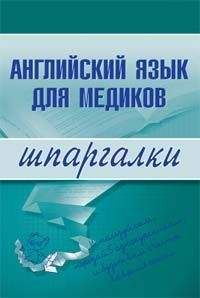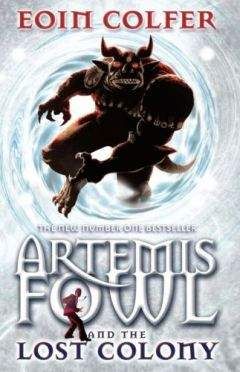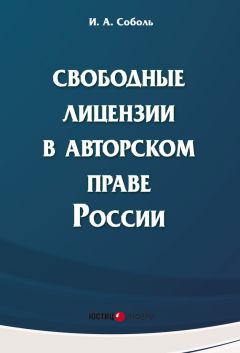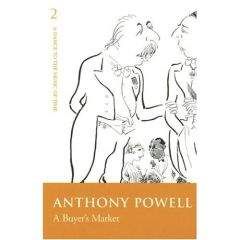Елена Беликова - Английский язык
На сайте mybooks.club вы можете бесплатно читать книги онлайн без регистрации, включая Елена Беликова - Английский язык. Жанр: Справочники издательство неизвестно,. Доступна полная версия книги с кратким содержанием для предварительного ознакомления, аннотацией (предисловием), рецензиями от других читателей и их экспертным мнением.
Кроме того, на сайте mybooks.club вы найдете множество новинок, которые стоит прочитать.

Елена Беликова - Английский язык краткое содержание
Английский язык читать онлайн бесплатно
Sebaceous glands are simple, branched holocrine aci-nar glands. They usually discharge their secretions onto the hair shaft within hair follicles. These glands are found in the dermis throught the skin, except on the palms and soles.
Secretory portions consist of peripherally located, flattened stem cells that resemble basal keratinocytes. Toward the center of the acini, enlarged differentiated cells are engorged with lipid. Death and fragmentation of cells nearest the duct portion result in the holocrine mechanism of secretion.
Duct portions of sebaceous glands are composed of stratified squamous epithelium that is continuous with the hair cat and epidermal surface.
Functions involve the lubrication of both hairs and corni-fied layers of the skin, as well as resistance to desiccation.
Control of sebaceous glands is hormonal. Enlargement of the acini occurs at puberty.
Hairs are long, filamentous projections consisting of dead keratini-zed epidermal cells. Each hair derives from an epidermal invagination called the hair follicle, which possesses a terminal hair bulb, located in the dermis or hypo-dermis, from which the hair shaft grows. Contraction of smooth muscles raise the hairs and dimple the epidermis («goose flesh»).
Nails, like hair, are a modified stratum corneum of the epidermis. They contain hard keratin that forms in a manner similar to the formation of hair. Cells continually proliferate and keratinize from the stratum basale of the nail matrix.
New wordscutaneous – кожный
appendace – покров
tubular – трубчатый
pyramidal – пирамидальный
surface – поверхность
thermal – тепловой
innervation – иннервация
7. Matter
Matter is anything that occupies space, possesses mass and can be perceived by our sense organs. It exists in nature in three, usually inter convertible physical states: solids, liquids and gases. For instance, ice, water and steam are respectively the solid, liquid and gaseous states of water. Things in the physical world are made up of a relatively small number of basic materials combined in various ways. The physical material of which everything that we can see or touch is made is matter. Matter exists in three different states: solid, liquid and gaseous. Human senses with the help of tools allow us to determine the properties of matter. Matter can undergo a variety of changes – physical and chemical, natural and controlled.
Chemistry and physics deal with the study of matter, its properties, changes and transformation with energy. There are two kinds of properties: physical – colour, taste, odour, density, hardness, solubility and ability to conduct electricity and heat; in solids the shape of their crystals is significant, freezing and boiling points of liquids.
Chemical properties are the changes in composition undergone by a substance when it is subjected to various conditions. The various changes may be physical and chemical. The physical properties are temporary. In a chemical change the composition of the substance is changed and new products are formed. Chemical properties are permanent.
It is useful to classify materials as solid, liquid or gas (though water, for example, exists as solid (ice), as liquid (water) and as gas (water vapour). The changes of state described by the terms solidify (freeze), liquify (melt), va-pourise (evaporate) and condense are examples of physical changes. After physical change there is still the same material. Water is water whether it is solid, liquid or gas. Also, there is still the same mass of material. It is usually easy to reverse a physical change.
New wordsmatter – материя
mass – масса
sense – чувство
organ – орган
steam – пар
to undergo – подвергать
variety – разнообрзие
change – перемена
physical – физический
chemical – химический
natural – природный
transformation – трансформация
colour – цвет
taste – вкус
odour – запах
density – плотность
hardness – твердость
solubility – растворимость
ability – возможность
to conduct – проводить
permanent – постоянный
8. Skeletal system
The components of the skeletal system are derived from mesenchymal elements that arise from mesoderm and neural crest. Mesenchymal cells differentiate into fibroblasts, chondroblasts, and osteoblasts, which produce connective tissue, cartilage, and bone tissue, respectively. Bone organs either develop directly in mesenchymal connective tissue (intramembranous ossification) or from preformed cartilage models (endochondral ossification) The splanch nic mesoderm gives rise to cardiac and smooth muscle.
The skeletal system develops from paraxial mesoderm. By the end of the fourth week, the sclerotome cells form embryonic connective tissue, known as mesenchyme. Mesenchyme cells migrate and differentiate to form fibroblasts, chondroblasts, or osteoblasts.
Bone organs are formed by two methods.
Flat bones are formed by a process known as intra-membinous ossification, in which bones develop directly within mesenchyme.
Long bones are formed by a process known as endochondral ossification, in which mesenchymal cells give rise hyaline cartilage models that subsequently become ossified
Skull formation.
Neurocranium is divided into two portions:
The membranous neurocranium consists of flat bones that surround the brain as a vault The bones appose one another at sutures and fontanelles, which allow overlap of bones during birth and remain membranous until adulthood.
The cartilaginous neurocranium (chondro-cranium) of the base of the skull is formed by fusion and ossification . -j of number of separate cartilages along the median plate.
Viscerocranium arises primarily from the first two pharynge arches.
Appendicular system: The pectoral and pelvic girdles and the limbs comprise the appendicular system.
Except for the clavicle, most bones of the system are end chondral. The limbs begin as mesenchymal buds with an apical ectodermal ridge covering, which exerts an inductive influence over the mesenchyme.
Bone formation occurs by ossification of hyaline cartilage models.
The cartilage that remains between the diaphysis and the epiphyses of a long bone is known as the epiphysial plate. It is the site of growth of long bones until they attain their final size and the epiphysial plate disappears.
Vertebral column.
During the fourth week, sclerotome cells migrate medially to surround the spinal cord and notochord. After proliferation of the caudal portion of the sclerotomes, the vertebrae are formed, each consisting of the caudal part of one sclerotome and cephalic part of the next.
While the notochord persists in the areas of the vertebral bod ies, it degenerates between them, forming the nucleus pulposus. The latter, together with surrounding circular fibers of the annulus fibrosis, forms the intervertebral disc.
New wordsskeletal – скелетный
mesoderm – мезодерма
cartilage – хрящ
fibroblasts – фибробласты
chondroblasts – хондробласты
osteoblasts – остеобласты
paraxial – параксиальный
flat – плоский
bone – кость
9. Muskular system
Skeletal (voluntary) system.
The dermomyotome further differentiates into the myo-tome and the dermatome.
Cells of the myotome migrate ventrally to surround the in-traembryonic coelom and the somatic mesoderm of the ventrolateral body wall. These myoblasts elongate, become spindle-shaped, and fuse to form multinucleated muscle fibers.
Myofibrils appear in the cytoplasm, and, by the third month, cross-striations appear. Individual muscle fibers increase in diameter as myofibrils multiply and become arranged in groups surrounded by mesenchyme.
Individual muscles form, as well as tendons that connect muscle to bone.
Trunk musculature: By the end of the fifth week, body-wall musculature divides into a dorsal epimere, supplied by the dorsal primary ramus of the spinal nerve, and a ventral hypomere, supplied by the ventral primary ramus.
Epimere muscles form the extensor muscles of the vertebral column, and hypomere muscles give rise to lateral and ven tral flexor musculature.
The hypomere splits into three layers. In the thorax, the three layers form the external costal, internal intercostal, and transverse thoracic muscle.
In the abdomen, the three layers form the external oblique, internal oblique, and transverse abdomii muscles.
Head musculature.
The extrinsic and intrinsic muscles of the tongue are thought to be derived from occipital myotomes that migrate forward.
The extrinsic muscles of the eye may derive from preoptic myotomes that originally surround the prochordal plate.
The muscles of mastication, facial expression, the pharynx, and the larynx are derived from different pharyngeal arches and maintain their innervation by the nerve of the arch of origin.
Limb musculature originates in the seventh week from soma mesoderm that migrates into the limb bud. With time, the limb musculature splits into ventral flexor and dorsal extern groups.
The limb is innervated by spinal nerves, which penetrate the limb bud mesodermal condensations. Segmental branches of the spinal nerves fuse to form large dorsal a ventral nerves.
The cutaneous innervation of the limbs is also derived from spinal nerves and reflects the level at which the limbs arise.
Smooth muscle: the smooth muscle coats of the gut, trachtea, bronchi, and blood vessels of the associated mesenteries are derived from splanchnic mesoderm surrounding the gastrointestinal tract. Vessels elsewhere in the body obtain their coat from local mesenchyme.
Cardiac muscle, like smooth muscle, is derived from splanchnic mesoderm.
New wordsventral – брюшной
somatic – соматический
cytoplasm – цитоплазма
cross-striations – поперечные бороздчатости
extensor – разгибающая мышца
dorsal – спинной
ivertebral – позвоночный
arche – дуга
abdomen – живот
facial – лицевой
branch – ветвь
10. Skeleton
The bones of our body make up a skeleton. The skeleton forms about 18 % of the weight of the human body.
The skeleton of the trunk mainly consists of spinal column made of a number of bony segments called vertebrae to which the head, the thoracic cavity and the pelvic bones are connected. The spinal column consists of 26 spinal column bones.
The human vertebrae are divided into differentiated groups. The seven most superior of them are the vertebrae called the cervical vertebrae. The first cervical vertebra is the atlas. The second vertebra is called the axis.
Inferior to the cervical vertebrae are twelve thoracic vertebrae. There is one rib connected to each thoracic vertebrae, making 12 pairs of ribs. Most of the rib pairs come together ventrally and join a flat bone called the sternum.
The first pairs or ribs are short. All seven pairs join the sternum directly and are sometimes called the «true ribs». Pairs 8, 9, 10 are «false ribs». The eleventh and twelfth pairs of ribs are the «floating ribs».
Inferior to the thoracic vertebrae are five lumbar vertebrae. The lumbar vertebrae are the largest and the heaviest of the spinal column. Inferior to the lumbar vertebrae are five sacral vertebrae forming a strong bone in adults. The most inferior group of vertebrae are four small vertebrae forming together the соссуx.
The vertebral column is not made up of bone alone. It also has cartilages.
New wordsskeleton – скелет
make up – составлять
weight – вес
trunk – туловище
vertebrae – позвоночник
thoracic cavity – грудная клетка
pelvic – тазовый
cervical – шейный
atlas – 1 шейный позвонок
sternum – грудина
mainly – главным образом
axis – ось
spinal column – позвоночник
inferior – нижний
rib – ребро
pair – пара
sacral – сакральный
соссуx – копчик
floating – плавающий
forming – формирующий
cartilage – хрящ
lumbar – поясничный
adult – взрослый
11. Muscles
Muscles are the active part of the motor apparatus; their contraction produces various movements.
The muscles may be divided from a physiological standpoint into two classes: the voluntary muscles, which are under the control of the will, and the involuntary muscles, which are not.
All muscular tissues are controlled by the nervous system.
When muscular tissue is examined under the microscope, it is seen to be made up of small, elongated threadlike cells, which arc called muscle fibres, and which are bound into bundles by connective tissue.
There are three varieties of muscle fibres:
1) striated muscle fibres, which occur in voluntary muscles;
2) unstriated muscles which bring about movements in the internal organs;
3) cardiac or heart fibres, which are striated like (1), but are otherwise different.
Muscle consists of threads, or muscle fibers, supported by connective tissue, which act by fiber contraction. There are two types of muscles smooth and striated. Smooth, muscles are found in the walls of all the hollow organs and tubes of the body, such as blood vessels and intestines. These react slowly to stimuli from the autonomic nervous system. The striated, muscles of the body mostly attach to the bones and move the skeleton. Under the microscope their fibres have a cross – striped appearance. Striated muscle is capable of fast contractions. The heart wall is made up of special type of striated muscle fibres called cardiac muscle. The body is composed of about 600 skeletal muscles. In the adult about 35–40 % of the body weight is formed by the muscles. According to the basic part of the skeleton all the muscles are divided into the muscles of the trunk, head and extremities.
According to the form all the muscles are traditionally divided into three basic groups: long, short and wide muscles. Long muscles compose the free parts of the extremities. The wide muscles form the walls of the body cavities. Some short muscles, of which stapedus is the smallest muscle in the human body, form facial musculature.
Some muscles are called according to the structure of their fibres, for example radiated muscles; others according to their uses, for example extensors or according to their directions, for example, – oblique.
Great research work was carried out by many scientists to determine the functions of the muscles. Their work helped to establish that the muscles were the active agents of motion and contraction.
Похожие книги на "Английский язык", Елена Беликова
Елена Беликова читать все книги автора по порядку
Елена Беликова - все книги автора в одном месте читать по порядку полные версии на сайте онлайн библиотеки mybooks.club.




